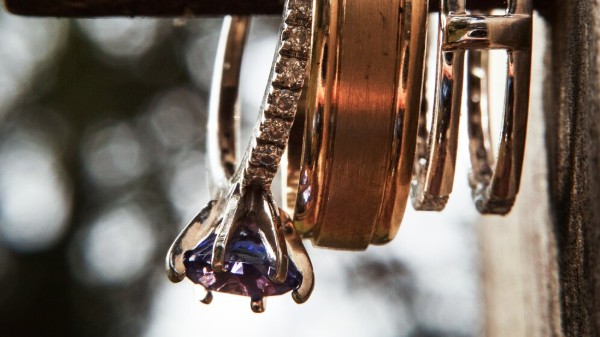Micro plating, also known as microns plating, is an advanced process used in jewelry manufacturing to apply an ultra-thin layer of precious metal onto a base material. This technique is popular for enhancing the appearance, value, and durability of jewelry pieces without the expense of using solid precious metals. By providing a thin coating, micro plating allows jewelry manufacturers to create visually appealing products while maintaining cost-effectiveness. In this article, we will explore what micro plating is, its different types, and its importance in jewelry manufacturing.
What is Micro Plating?
Micro plating is a process in which a very thin layer of metal, typically gold, silver, rhodium, or platinum, is deposited onto a base metal or alloy through electroplating. The thickness of the plated layer is measured in microns, which are one-millionth of a meter. Micro plating allows jewelry to have the appearance of precious metal while being made primarily from more affordable base materials.
- Purpose: The primary purpose of micro plating is to enhance the appearance, resistance to tarnish, and overall value of jewelry pieces. It provides the luxurious look of precious metals without the high cost of using solid gold or platinum.
- Standardization: The thickness of the micro plating layer is carefully controlled, often ranging from 0.5 to 5 microns depending on the application. Thicker layers provide better durability, while thinner layers are more economical.
Types of Micro Plating in Jewelry Manufacturing
Gold Micro Plating:
- Overview: Gold micro plating is one of the most common types of micro plating used in jewelry. The layer of gold can range in thickness from 0.5 to several microns, depending on the desired durability and application.
- Applications: Gold micro plating is used for a wide variety of jewelry items, including necklaces, bracelets, rings, and earrings. It provides the visual appeal of gold while keeping the cost low, making it a popular choice for fashion jewelry.
Rhodium Micro Plating:
- Overview: Rhodium, a member of the platinum family, is often used to plate white gold and silver jewelry. Rhodium micro plating gives a bright, reflective finish and provides excellent resistance to tarnish.
- Applications: Rhodium plating is widely used for white gold engagement rings, earrings, and necklaces to enhance their appearance and prevent tarnishing. It is also used on silver jewelry to prevent oxidation and maintain its shine.
Platinum Micro Plating:
- Overview: Platinum micro plating is used for high-end jewelry to give a luxurious, high-quality finish. The thin layer of platinum adds a beautiful luster while providing enhanced durability.
- Applications: Platinum plating is commonly used on engagement rings, wedding bands, and other fine jewelry pieces to provide a premium finish without the cost of solid platinum.
Silver Micro Plating:
- Overview: Silver micro plating is used to enhance the appearance of base metal jewelry with a layer of real silver. This plating provides the bright, reflective quality of silver while maintaining affordability.
- Applications: Silver micro plating is often used for fashion jewelry, such as bangles, pendants, and earrings, where the look of silver is desired without the high price.
Importance of Micro Plating in Jewelry Manufacturing
- Cost Efficiency: Micro plating allows jewelry manufacturers to create pieces that have the appearance of precious metals without the high cost associated with solid gold, platinum, or silver. This makes it possible to offer luxurious-looking jewelry at an affordable price, broadening the market for such pieces.
- Enhanced Aesthetic Appeal: By applying a thin layer of a precious metal, micro plating significantly enhances the visual appeal of jewelry, giving it a more luxurious and attractive finish. This process is especially useful for fashion jewelry where aesthetics play a crucial role.
- Protection Against Tarnish: Metals like rhodium are used in micro plating to protect base metals from tarnishing or corrosion. This ensures that jewelry pieces maintain their shine and appearance for longer periods, increasing their longevity and value.
Practical Considerations for Using Micro Plating
- Layer Thickness: The thickness of the plating layer affects both the durability and cost of the jewelry. Thicker layers provide better resistance to wear and tarnish, but they also increase the overall cost of the piece. Manufacturers need to balance the thickness to achieve the desired durability without exceeding budget constraints.
- Wear and Tear: Over time, the thin layer of metal applied during micro plating can wear off, particularly in frequently worn items such as rings and bracelets. Replating may be necessary to maintain the appearance of these pieces.
- Base Material Selection: The choice of base material is important for ensuring good adhesion of the micro plating layer. Metals like brass, copper, and sterling silver are often used as base materials due to their compatibility with the plating process.
Micro Plating in Jewelry Manufacturing Process
The micro plating process begins with preparing the base metal by cleaning and polishing it to ensure that the plating adheres properly. Once the base material is ready, it is submerged in an electrolytic solution containing the desired plating metal. An electric current is then passed through the solution, causing the metal ions to bond to the surface of the base material, forming a thin, even layer.
The thickness of the micro plating layer is controlled by adjusting the duration of the plating process and the strength of the electric current. After plating, the jewelry pieces are often polished again to achieve a high-quality finish. Quality control is crucial throughout the process to ensure that the plating is even and that the final product meets the desired standards for appearance and durability.
Conclusion
Micro plating is an essential process in modern jewelry manufacturing, allowing for the creation of visually appealing, cost-effective pieces that have the look and feel of solid precious metals. By using micro plating, manufacturers can enhance the beauty and durability of their jewelry while making it accessible to a wider audience. Understanding the different types of micro plating—such as gold, rhodium, platinum, and silver—enables manufacturers to choose the right finish for their jewelry, balancing cost, appearance, and longevity. Micro plating plays a crucial role in the jewelry industry, offering a practical way to produce high-quality, attractive jewelry that meets consumer expectations for both aesthetics and value.



